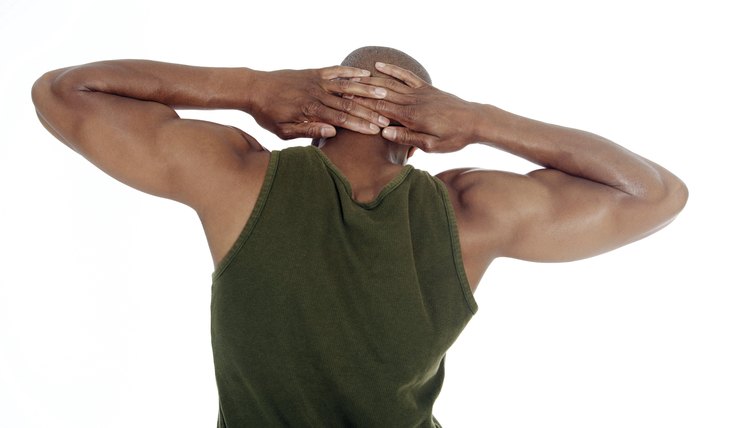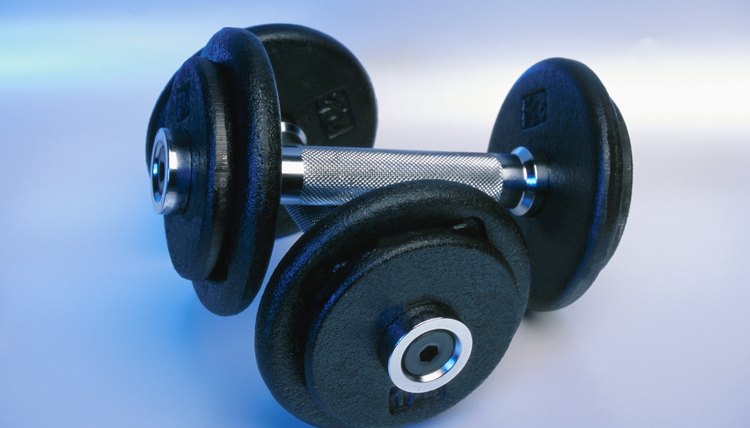How to Heal a Pulled Trapezius Muscle

The trapezius muscles are on either side of your neck and help support your head. They run down the center of your back along your spine, reaching to the base of your rib cage. A pulled trapezius muscle leads to difficulty in moving and back and neck pain. A pulled trapezius muscle is usually the result of a fall or an accident, but some daily activities can cause one, as well. Sitting at an improper height in relation to your keyboard, carrying a heavy purse or repetitively reaching forward can all aggravate this muscle. To heal a pulled trapezius muscle, follow some simple steps.
Recover From a Pulled Trapezius

Stockbyte/Stockbyte/Getty Images
Ice the injury several times a day for 10 minutes at a time. This is especially important if there is any swelling. Continue icing at least twice a day as long as the muscle is painful.

Stockbyte/Stockbyte/Getty Images
Take ibuprofen to help reduce the swelling. Discontinue use as soon as the swelling goes down. Do not use ibuprofen for more than 10 days in a row.

Stockbyte/Stockbyte/Getty Images
Rest the muscle until the pain subsides. That means no heavy lifting and maintaining good posture while doing desk work.

Stockbyte/Stockbyte/Getty Images
Once the swelling has gone down and the pain shows signs of subsiding, begin doing stretching exercises to help the muscle heal. Stretch gently, using slow movements, and do not push any stretch to the point of discomfort. Stretch the neck laterally by looking forward and bending your ear toward your shoulder. Keep the shoulders even during this stretch. Hold the stretch for at least a 10 count. Switch sides and repeat. Stretch the neck forward by gently dropping your chin to your chest. Keep the shoulders even—don’t allow them to come up. Hold this stretch for 10 seconds.

Stockbyte/Stockbyte/Getty Images
Once the muscle has healed, prevent injuries by doing exercises to build strength. Do shoulder shrugs to strengthen the muscles. Let your arms hang at your sides. Keep your arms straight as you raise your shoulders toward your ears. Do three sets of 10. Add resistance by holding a three- or five-pound dumbbell in each hand while doing the shrugs.
References
Writer Bio
Heather Robson has more than 10 years of professional writing experience with articles appearing in publications such as "Portland Magazine" and "Treasure Valley Family Magazine." Her education is in physics and English literature, so she's ready to tackle any topic that comes her way.
